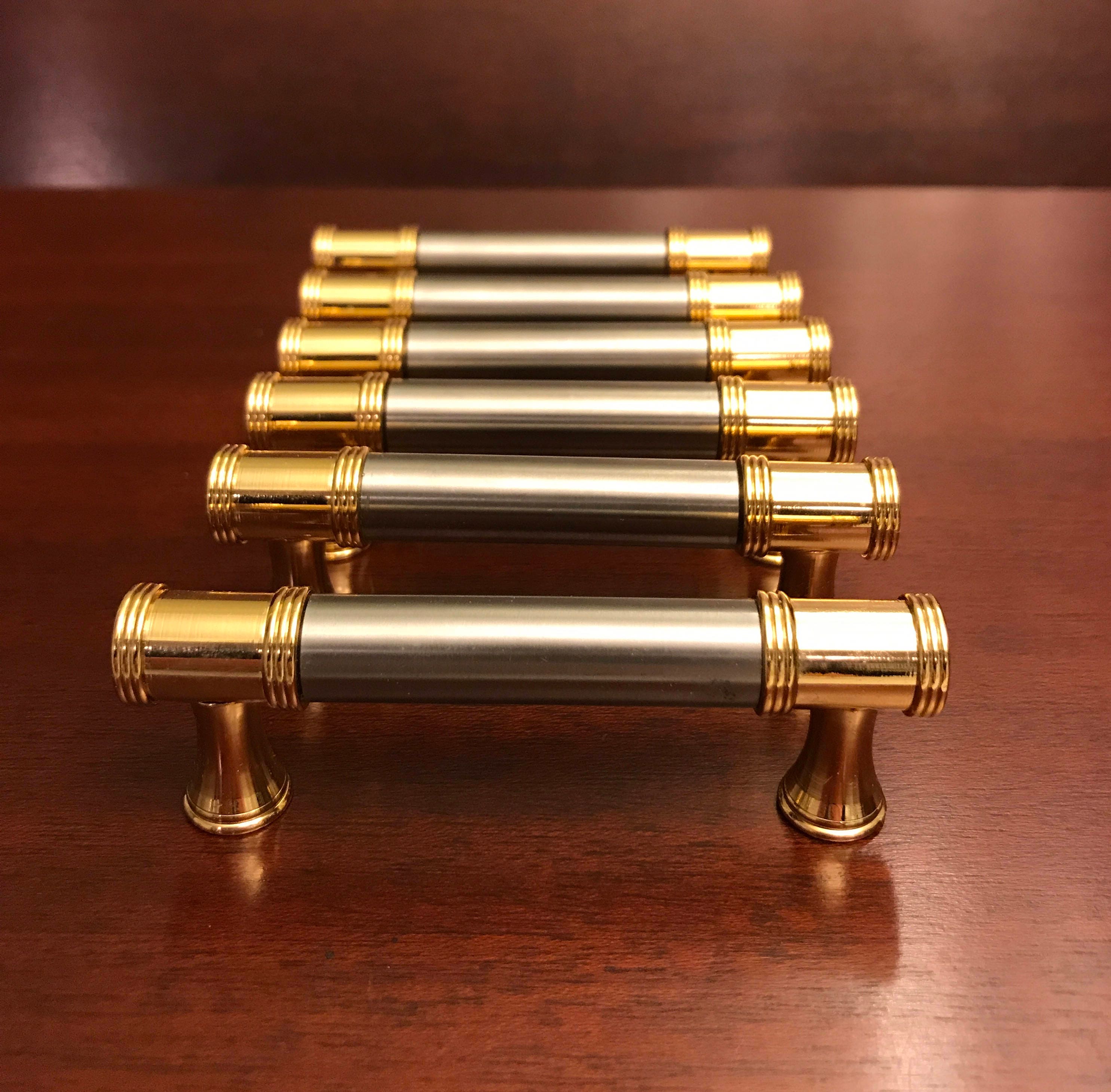Material & Manufacturing Considerations: Black And Brass Cabinet Hardware

Yo, let’s get down to the brass tacks (pun intended!) about the materials and how these wicked black and brass handles get made. We’re talking durability, cost, the whole shebang. Think of it as the inside scoop on your next kitchen upgrade.
Black and brass cabinet hardware – Choosing the right materials is key for that perfect blend of style and longevity. Different materials bring different vibes, from the ruggedness of cast iron to the sleekness of stainless steel. The manufacturing process itself is a whole other ball game, impacting everything from the final look to the environmental footprint.
Material Comparisons, Black and brass cabinet hardware
Here’s the lowdown on the materials used in making black and brass hardware, breaking it down by durability, cost, and how much effort you’ll need to keep them looking fresh.
- Brass: A classic choice, known for its strength and that gorgeous golden hue. It’s relatively durable, but can tarnish over time, requiring regular polishing. The cost varies depending on the purity of the brass. Think of it as the OG, a bit more pricey but worth the investment for its timeless appeal.
- Zinc Alloys: Often used as a more affordable alternative to solid brass. They’re pretty durable, but might not have the same heft or luxurious feel. They’re also easier to work with, leading to potentially lower manufacturing costs. Think of them as the budget-friendly option, still looking pretty fly.
- Steel: A tough cookie, steel offers great strength and resistance to damage. It’s usually coated with a black finish, which can chip or wear over time. It’s generally cheaper than brass, but the finish needs to be durable to last. This is your reliable workhorse option.
- Black Finishes: The black finish itself can be applied in several ways – powder coating, PVD (Physical Vapor Deposition), or electroplating. Powder coating is a popular, relatively affordable option, but it’s not as scratch-resistant as PVD. PVD is more durable and offers a more consistent finish, but it’s also pricier. The finish dramatically affects the overall look and longevity of the hardware.
Manufacturing Processes
Making these bad boys isn’t just a case of throwing some metal together. It’s a precise process involving several key steps to ensure quality and durability.
- Casting: Molten metal is poured into molds to create the basic shapes. This is common for more intricate designs. Think of it like creating a metal sculpture, but on a mass production scale.
- Machining: For simpler designs, raw metal stock is shaped using CNC machines (Computer Numerical Control). This is precise and efficient, leading to consistent results. This is the precision engineering side of things.
- Finishing: This is where the magic happens. Brass might be polished to a high shine, or given a brushed or antique finish. Black finishes are applied using powder coating, PVD, or electroplating. The finish is crucial for both aesthetics and protection against corrosion.
- Quality Control: Rigorous testing is essential to ensure the hardware meets quality standards and is durable enough for everyday use. This step ensures everything is ship-shape before it hits the shelves.
Environmental Impacts & Mitigation
Let’s be real, making stuff has an impact on the planet. We need to think about the environmental cost of materials and manufacturing processes.
- Material Sourcing: Using recycled metals reduces the demand for newly mined resources. Look for manufacturers committed to sustainable sourcing practices.
- Manufacturing Processes: Minimizing waste during production is key. Efficient manufacturing techniques and responsible waste management are crucial. Think lean manufacturing and recycling programs.
- Finishes: Some finishes are more environmentally friendly than others. For example, water-based coatings are a better choice than solvent-based ones. Look for low-VOC (Volatile Organic Compound) finishes.
- Packaging: Using recycled and recyclable packaging reduces waste and its impact on the environment. Think eco-friendly packaging materials and minimal packaging.
